Pallet Guide
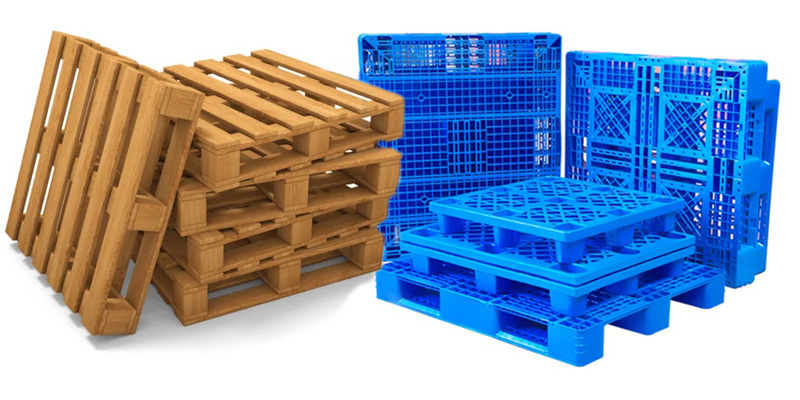
The Ultimate Pallet Sizing Guide
Pallets are an essential component in the world of logistics and supply chain management. They are platforms used to support goods during transportation and storage, making the handling of large quantities of products more efficient and secure. Understanding pallet styles and sizes is crucial for businesses involved in shipping and warehousing, as the right pallet size can maximize space utilisation, reduce shipping costs, and improve operational efficiency. This ultimate pallet sizing guide will look at the various aspects of pallet styles and sizes, including their types, dimensions, applications, and benefits.
The Importance of a Pallet Sizing Guide
Choosing the right pallet size is vital for several reasons:
- Maximised Storage: Optimising pallet size helps in better utilisation of warehouse space.
- Cost Efficiency: Reduces shipping costs by fitting more products into a container.
- Product Safety: Ensures stability and safety of goods during transport.
- Compliance: Adheres to international shipping regulations and standards.
- ISPM15 International Standards For Phytosanitary Measures No. 15.
Pallet Styles
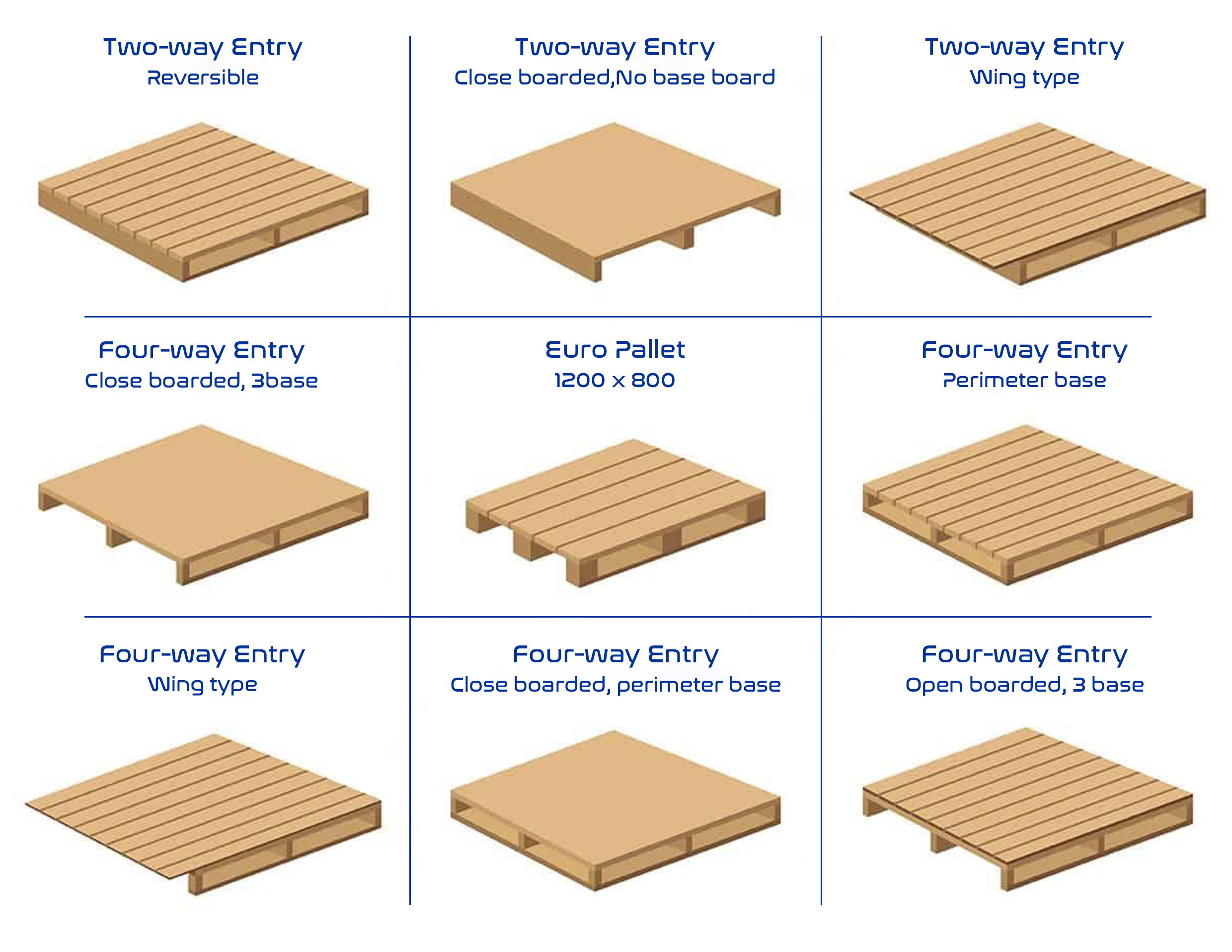
Pallet Sizing Guide

Standard UK Pallet Sizes
A standard UK pallet is:
Length = 120cm
Width = 100cm
Max Hight 220cm

European Pallet Sizes
A standard EU pallet is:
Length = 120cm
Width = 80cm
Max Hight 220cm
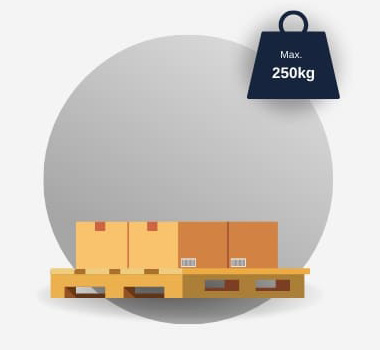
Quarter Pallet
Length: 1.2m
Width: 1.0m
Hight: 0.6m
Max Weight: 250kg
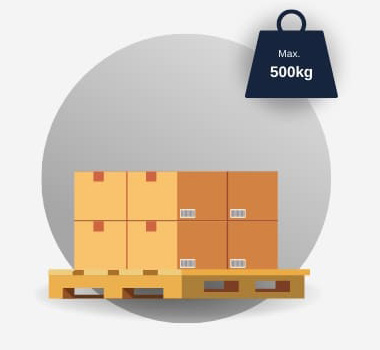
Half Pallet
Length: 1.2m
Width: 1.0m
Hight: 1.0m
Max Weight: 500kg

Full Pallet
Length: 1.2m
Width: 1.0m
Hight: 2.2m
Max Weight: 1,200kg
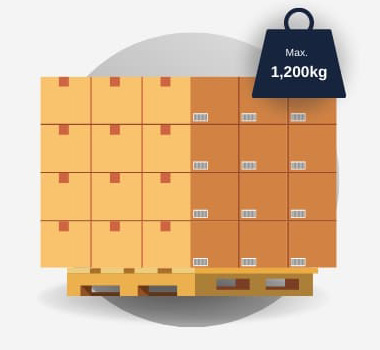
Oversized Pallet
Length: 2.4m
Width: 1.2m
Hight: 2.2m
Max weight: 2,000kg
Pallet Sizes
The pallet high limit is an area to consider when you’re obtaining quotes.
There are three standard heights of stacked pallets that are recognized by third party providers as part of the standard UK pallet sizing guide:
Quarter Pallet
Half Pallet
Full Pallet
For a UK standard pallet, the maximum pallet height should not exceed the pallet height limit of 220cm when fully loaded, and the same goes for Euro pallets. To avoid any uncertainties, when calculating the pallet height, you should ensure the measurement is taken from the ground to the highest point of the stacked goods.
If you’re shipping globally, there are further variations in international standard sizes, therefore checking thoroughly before placing a freight forwarding request.
Pallet Weight
The weight of the product you’re shipping is also a crucial consideration
There are three standard weight grades recognised for
UK standard pallet sizing guide:
Grade 1 (holds around 1,000kg in weight)
Grade 2 (holds approximately 750kg)
Grade 3 (light option holds between 200 – 500kg)
To enable safe carriage, pallet weight should not exceed:
a maximum of 1,000 kg on a grade 1 base.
Pallets are made in different weight bearing capacities, meaning the product weight should be accounted for when making the right selection for your load.
Often, sending palletised goods can be more cost-efficient than forking out for oversized parcel costs, as long as the right supplier and pallet type is selected.
Worldwide Pallet Sizing Guide
North American Pallet Sizing guide:
The most common pallet size in North America is: 48 inch x 40 inch pallet, also known as the GMA (Grocery Manufacturers Association) pallet.
Other sizes include: 42 inch x 42 inch and 48 inch x 48 inch
Asian Pallet Sizing guide:
Asian pallet sizes vary, but the most common is the 1.1m x 1.1m pallet.
Other sizes include: 1.2m x 1.0m and 1.2m x 0.8m
Australian Pallet Sizing guide:
In Australia, the standard pallet size is: 1.165m x 1.165m suitable for the unique dimensions of Australian rail containers and warehouses.
Materials Used in Pallet Construction
Wood Pallets
Wooden pallets are the most commonly used, known for their strength, durability, and recyclability. They come in various types, including hardwood and softwood pallets.
Plastic Pallets
Plastic pallets are lightweight, resistant to moisture, and ideal for hygiene-sensitive industries. They are durable and can be reused multiple times.
Metal Pallets
Metal pallets, made from steel or aluminium, are robust and suitable for heavy loads and harsh environments. They offer longevity and can be sanitised easily.
Paper Pallets
Paper pallets, made from corrugated fibreboard, are lightweight and recyclable. They are ideal for one-way shipping and export.
Composite Pallets
Composite pallets combine materials like wood, plastic, and metal to offer specific advantages, such as increased strength and durability.
Applications of Different Pallet Sizes / Types
Different industries require different pallet sizes based on their specific needs. For example:
Retail:
Standardised pallets for easy handling and storage, generally wood, light and versatile.
Automotive:
Custom-sized pallets for transporting parts, can be composite or metal or very strong wood, generally made bespoke for the part.
Food & Beverage:
Hygienic pallets that meet health standards. Normally plastic but in some cases they will use metal or composite.
Standards | Regulations
ISPM 15 stands for International Standards For Phytosanitary Measures No. 15. The most prominent organisation that develops international standards is the International Organisation for Standardisation more commonly referred to as the ISO. Quite simply ISPM 15 or International Standard for Phytosanitary Measure 15 is the 15th measure to protect humans, animals and plants from disease, pests and contaminants.
ISPM 15 describes a standard that is not intended to provide ongoing protection from contaminating pests or organisms. It describes three approaches to eradicating the potential for pests and contaminants. These are:
- Heat Treatment
- Kiln Drying
- Methyl bromide (MB) fumigation for wood packaging material
There are strict regulations for each of these approaches which ensures that pests, diseases and contaminants are all eradicated.
The Government’s guidelines state:
You, or your packing service or freight forwarder, must make sure any solid wood packaging you use meets the requirements shown here.
ISPM 15 applies to international trade so its important that countries adhere to this measure to stop the spread of pests.
Here is a comprehensive list of different countries who require wooden packaging entering their country to meet ISPM 15 regulations. This is another clear indication how important it is to use a comprehensive pallet sizing guide before choosing your pallets to suit your business.
Summary
As you can see there are a lot of factors to take into consideration when choosing a pallet. It can be quite daunting for someone who has no experience to make all the right choices. Which it why it is essential to use a comprehensive pallet sizing guide.
Understanding pallet sizes is crucial for efficient logistics and supply chain management. By choosing the right pallet sizing guide to decide the size and material which best suites your business needs can optimize businesses operations, reduce costs, and enhance sustainability. We would always recommend talking to an expert about your freight forwarding needs, as sometimes its the simple thing, “like choosing the correct pallet” that can cost your business a lot of money in the long term.
If you have any questions please just get in touch before you need to ship, we are always happy to help. SARR Logistics UK customers comments can be see here.

